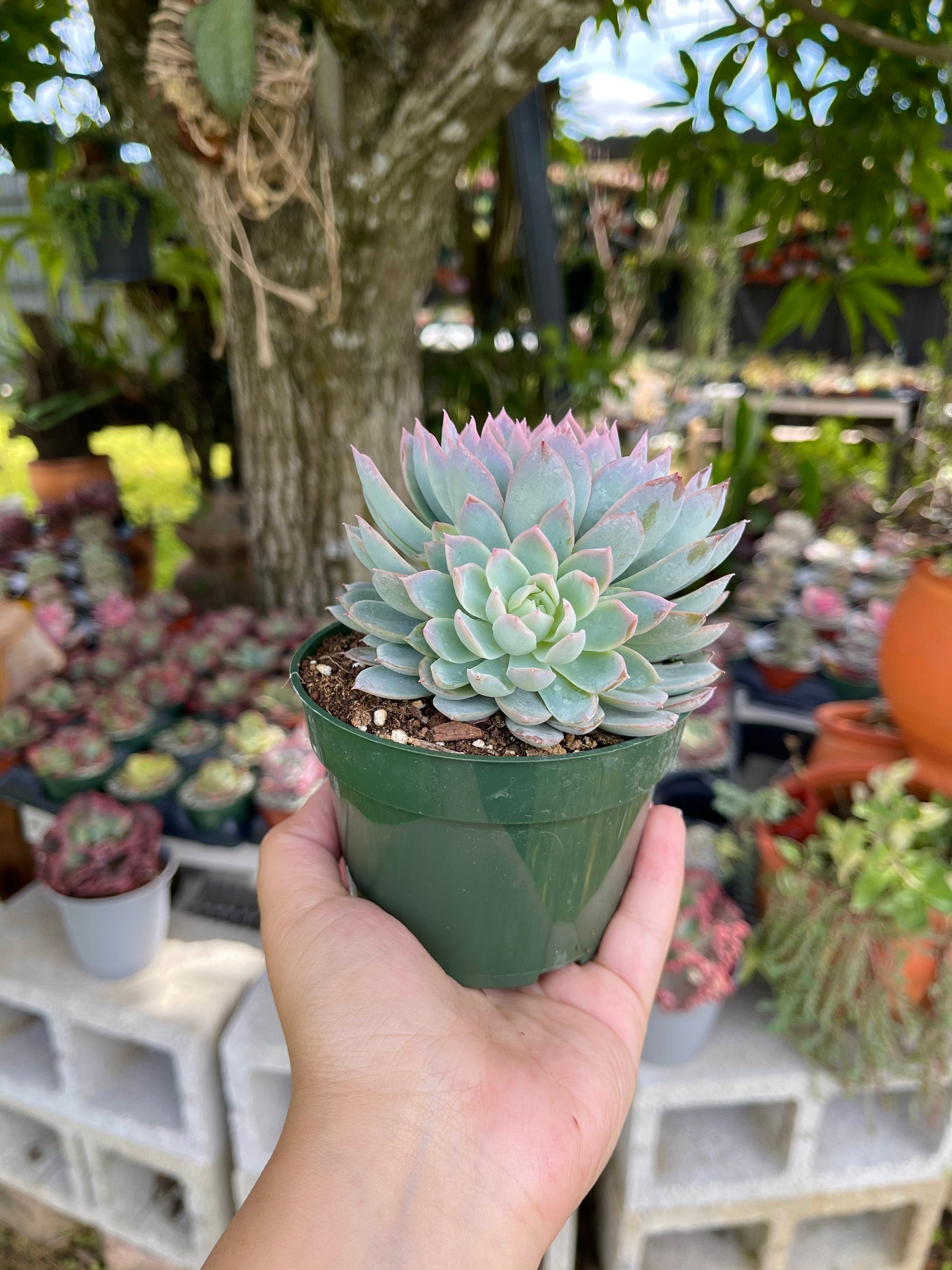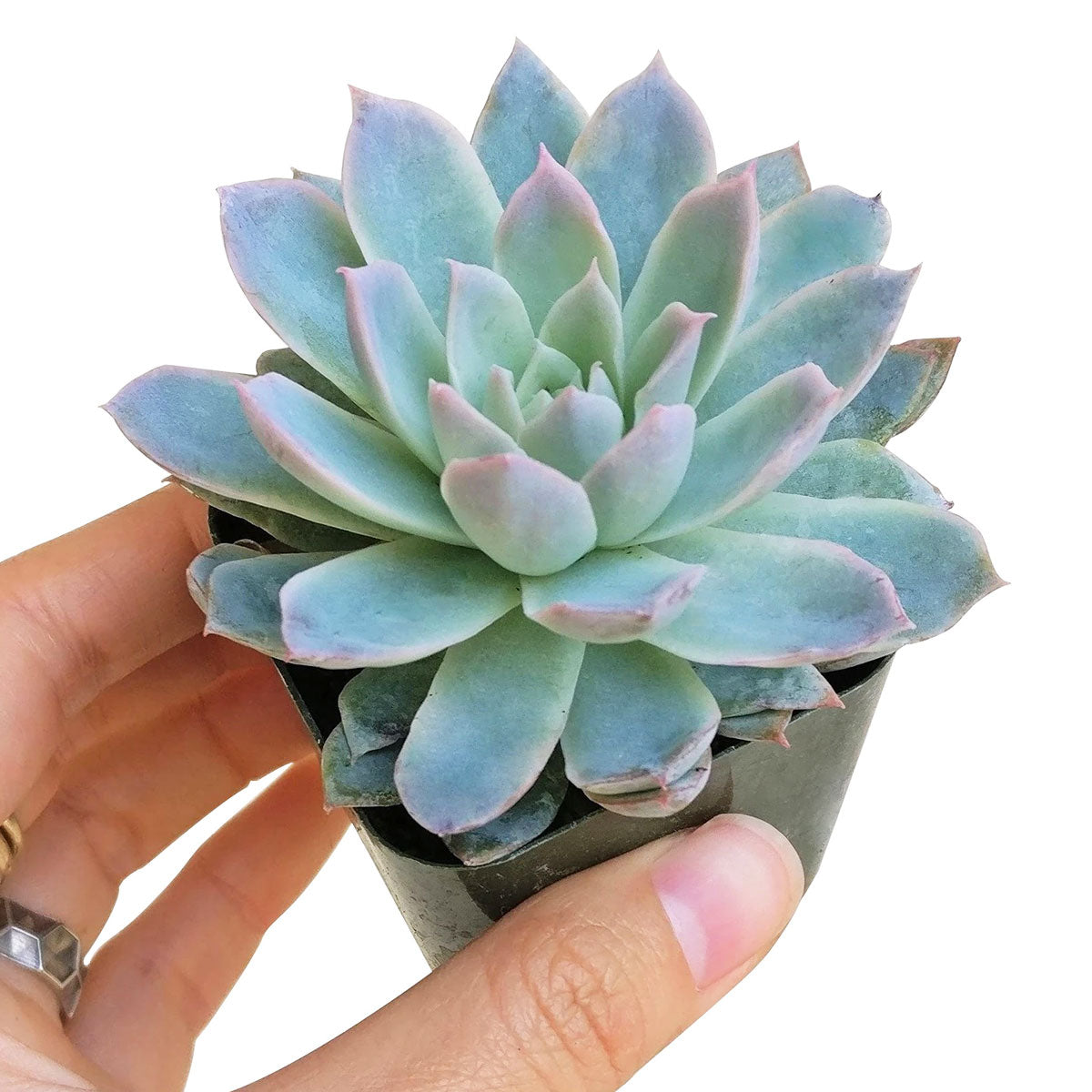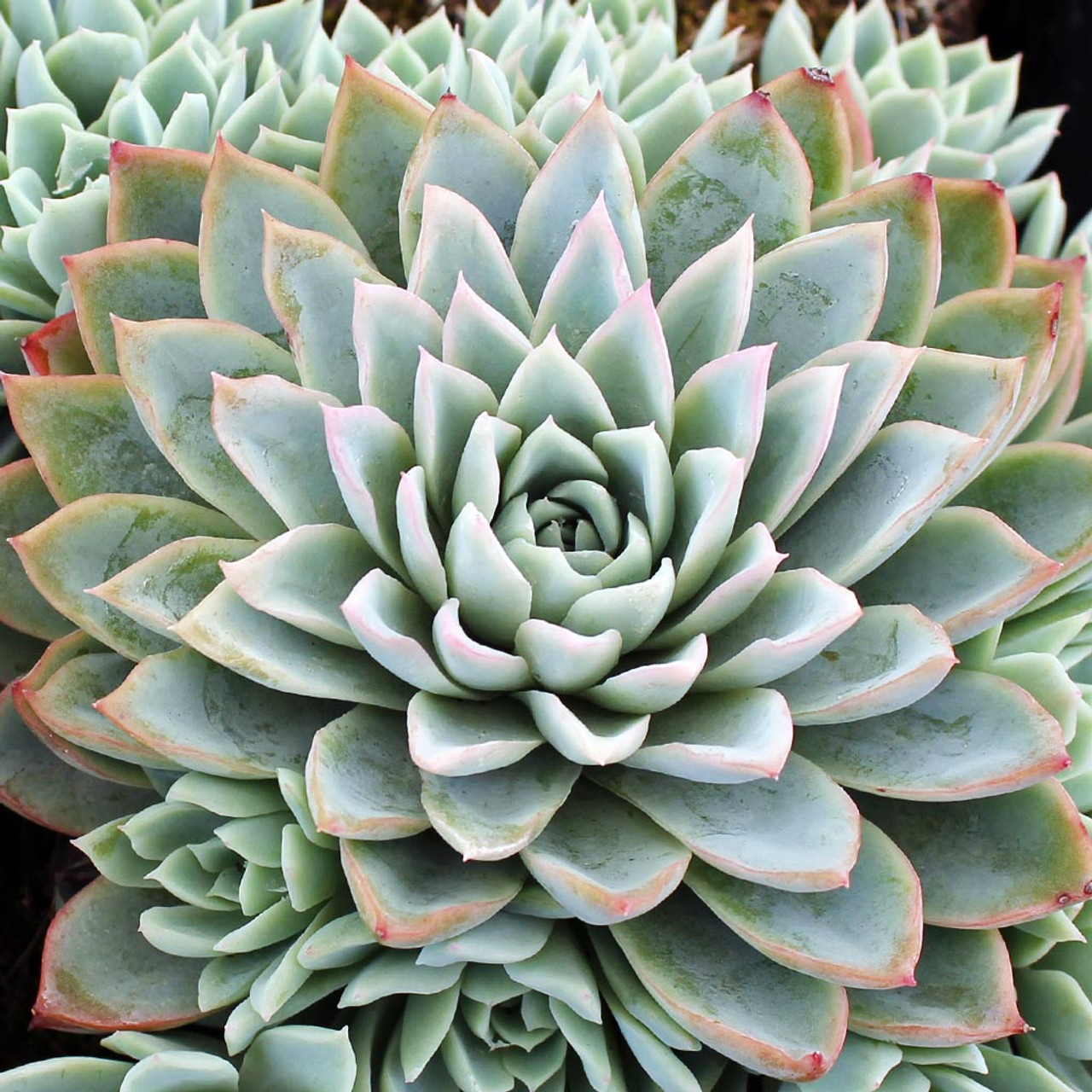This rapidly growing succulent has silvery leaves that curve up, resembling a lotus flower. If it is given the right amount of stress, the tips of the leaves will turn pink. It often grows in clusters of up to 20 rosettes. White or grey-green blooms may appear in the Spring.
Table of Contents
Care and Propagation Information
Echeveria ‘Violet Queen’ is an ideal plant to add to xeriscaped gardens, as its vibrant purple blooms bring lasting color to the outdoors. Additionally, its flowers work as a magnet for hummingbirds.
Watering
For Echeveria ‘Violet Queen’, the recommended watering technique is the “soak and dry” method, meaning that the soil should be allowed to dry out completely before the next watering. This is the standard for succulent plants.
Where to Plant
If you live in a region that experiences temperatures lower than 20° F (-6.7° C), it is recommended that you grow the Violet Queen succulent in a pot that can be brought inside. This plant does best in locations where it will receive full to partial sunlight.
How to Propagate Echeveria ‘Violet Queen’
It is possible to propagate Echeveria ‘Violet Queen’ by taking cuttings from either offsets or leaves.
Offsets
To propagate a Violet Queen, remove the small rosette offsets from the main stem with a clean and sharp blade or scissors. Let the offsets rest for 24-48 hours before planting them in a soil that drains well.
Leaves
To successfully propagate ‘Violet Queen,’ twist a leaf from the mother plant so that none of it remains on the stem. Ensuring that the leaf is completely detached will maximize the chances of success.
Let the leaf dry out for several days until the end becomes tough and calloused. Once it is ready, place it on a soil that drains well. Make sure to water it only when the soil is completely dry.
Care and Propagation Information
General Care for Echeveria ‘Violet Queen’
Watering
For Echeveria ‘Violet Queen’, the recommended watering technique is the “soak and dry” method, meaning that the soil should be allowed to dry out completely before the next watering. This is the standard for succulent plants.
Where to Plant
If you live in a region that experiences temperatures lower than 20° F (-6.7° C), it is recommended that you grow the Violet Queen succulent in a pot that can be brought inside. This plant does best in locations where it will receive full to partial sunlight.
How to Propagate Echeveria ‘Violet Queen’
It is possible to propagate Echeveria ‘Violet Queen’ by taking cuttings from either offsets or leaves.
Offsets
To propagate a Violet Queen, remove the small rosette offsets from the main stem with a clean and sharp blade or scissors. Let the offsets rest for 24-48 hours before planting them in a soil that drains well.
Leaves
To successfully propagate ‘Violet Queen,’ twist a leaf from the mother plant so that none of it remains on the stem. Ensuring that the leaf is completely detached will maximize the chances of success.
Let the leaf dry out for several days until the end becomes tough and calloused. Once it is ready, place it on a soil that drains well. Make sure to water it only when the soil is completely dry.
https://www.youtube.com/watch?v=and5yhb4q5U
FAQ
How do you take care of a violet queen succulent?
The optimal way of watering Echeveria ‘Violet Queen’ is to employ the “soak and dry” technique, which entails letting the soil to dry out completely between waterings. This is in line with the usual watering requirements of a succulent.
How big does a violet queen succulent get?
In optimal conditions, Echeveria Violet Queen can reach 15cm in diameter and 10cm in height. If allowed to form clumps, this size can be larger.
How big do Echeveria succulents get?
Why is my Echeveria growing tall?
Etiolation is a phenomenon that occurs when a plant does not receive enough sunlight, resulting in a distortion of the plant’s shape, color, and growth. This is especially common with indoor succulents, which don’t receive direct sunlight for extended periods of time, but it can affect any type of succulent.
How big do Echeveria violet queen get?
Five inches in height.



